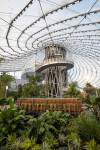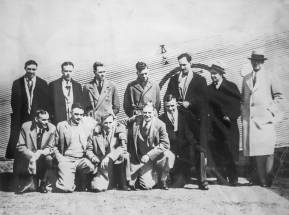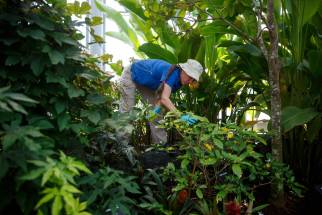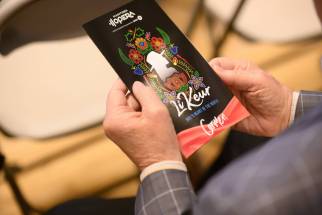Keeping the Leaf in bloom Euguenia Druyet Zoubareva considers herself a kind of parent to the 12,000 plants
Read this article for free:
or
Already have an account? Log in here »
To continue reading, please subscribe:
Monthly Digital Subscription
$0 for the first 4 weeks*
- Enjoy unlimited reading on winnipegfreepress.com
- Read the E-Edition, our digital replica newspaper
- Access News Break, our award-winning app
- Play interactive puzzles
*No charge for 4 weeks then price increases to the regular rate of $19.00 plus GST every four weeks. Offer available to new and qualified returning subscribers only. Cancel any time.
Monthly Digital Subscription
$4.75/week*
- Enjoy unlimited reading on winnipegfreepress.com
- Read the E-Edition, our digital replica newspaper
- Access News Break, our award-winning app
- Play interactive puzzles
*Billed as $19 plus GST every four weeks. Cancel any time.
To continue reading, please subscribe:
Add Free Press access to your Brandon Sun subscription for only an additional
$1 for the first 4 weeks*
*Your next subscription payment will increase by $1.00 and you will be charged $16.99 plus GST for four weeks. After four weeks, your payment will increase to $23.99 plus GST every four weeks.
Read unlimited articles for free today:
or
Already have an account? Log in here »
Hey there, time traveller!
This article was published 14/04/2023 (970 days ago), so information in it may no longer be current.
Euguenia Druyet Zoubareva’s silver leaf-shaped earrings glint discreetly as they catch the light streaming through the tall windows of the tropical biome in The Leaf, Assiniboine Park’s new gleaming glasshouse.
Zoubareva is the lead gardener at the $130-million modern conservatory, which opened last December, and oversees a 6,000-square-metre space with four distinct zones: the three biomes – tropical, Mediterranean, and butterfly — and the seasonal rotating displays at the Babs Asper Display House.
She manages a team of six to tend more than 12,000 trees, shrubs and flowers representing 400 unique species. There are 3,500 plants in the tropical biome, 1,500 in the Mediterranean biome and 4,984 plants on a vertical green wall at the display house. She’s also in charge of the butterfly garden shrubbery, which serves as a food source for the insects.
Mike Deal / Winnipeg Free Press ‘It’s a balancing act, trying to maintain equilibrium,’ says The Leaf’s Euguenia Druyet Zoubareva.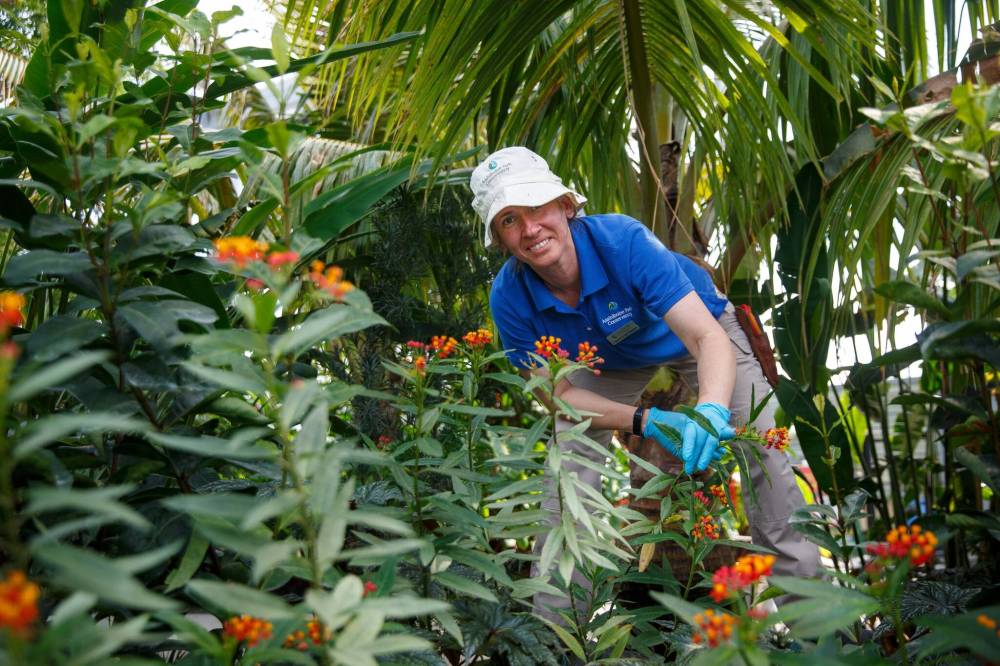
It’s a mammoth task, especially so during winters that can linger below -20 C for days on end. But it’s not just cold she has to combat; while the plants may be cocooned in their temperature-controlled habitats, outside conditions including warmer days can, and do, affect the space.
“I need to check the weather, to see how it’s going to be; sunny or overcast and then cross fingers. It’s a balancing act, trying to maintain equilibrium,” she explains.
The gardeners started planting last June when the building was still under construction. The biomes were planted in layers; the biggest first to establish structure, before a second layer of shrubs and bushes and then ground cover, the final layer. They have to wait for a complete cycle of a year before the staff know how the flora will react to the environment. Currently everything is still very much in flux.
For Zoubareva, looking after the plants is as serious a job as taking care of children. Her priority is to keep them alive and thriving.
Watering is of utmost importance — some of the plants in the tropical biome have immature root systems and require more water than others. It’s the opposite in the Mediterranean biome; there they have to be careful not to over- or under-water.
”These first two to three years are critical for the development of the plants. The requirements of the plants will change, and we are still learning how that happens.”–Euguenia Druyet Zoubareva
“These first two to three years are critical for the development of the plants. The requirements of the plants will change, and we are still learning how that happens,” she says.
She goes through the biomes every day, making sure nothing is amiss. It can be a challenging and somewhat stressful job and no two days are the same.
“There are many things going on and people coming in and things happen. Sometimes I need to jump into the pond, some kids throw a toy in there, so I need to grab it,” she says.
Toys in the pond are the least of her worries. More disturbing is when visitors take liberties.
“Unfortunately people do stuff like get a cutting,” she says, a bit exasperated. “They can introduce pests and disease to this place and also take pests and disease out with them.”
Daniel Crump / Winnipeg Free Press files There are 3,500 plants in The Leaf’s tropical biome, pictured; 1,500 in the Mediterranean biome and 4,984 plants on a vertical green wall at the display house.
Born in Cuba in 1977, Zoubareva grew up surrounded by plants and animals. Her parents, both busy professionals who travelled for work, would rely on close friends Carmita and Angel to care for their youngster.
“Angel (Pipo) rescued two German shepherds plus a small Bichon Habanero and pigeons, cats, ducks, geese, chickens, goats and all kind of animals… and all of them loved him. Carmita with the plants… I grew up in an environment of loving and taking care of plants and animals.”
She describes her late father, Pablo, as an emotionally intelligent extrovert with a love of math, qualities he passed on to his daughter. She got her will to persevere and a love of art, culture, and literature from her mother, Sofia.
She credits elderly former neighbour Constantino for her passion for science and philosophy.
“He was very old and wise and very philosophical, and a lover of science. I think I got that perspective somehow thanks to him,” she says.
Cuba was a good place to grow up in the 1980s, but things changed when she was in her teens, when the economic crisis hit the island country in the ’90s, Zoubareva says.
She had been accepted to Escuela Vocational Vladimir Lenin, a high school that specialized in the sciences, and found herself having to deal with tough circumstances.
“No electricity for several hours, the food was basic, and we would go home every 11 days because there was no gasoline for transportation. To be in that school you needed to have high grades, so it was hard to study at night without electricity,” she says.
Mike Deal / Winnipeg Free Press Not all Euguenia Druyet Zoubareva’s work is tending plants. Sometimes toys end up in the pond. Worse: ‘Unfortunately people do stuff like get a cutting.’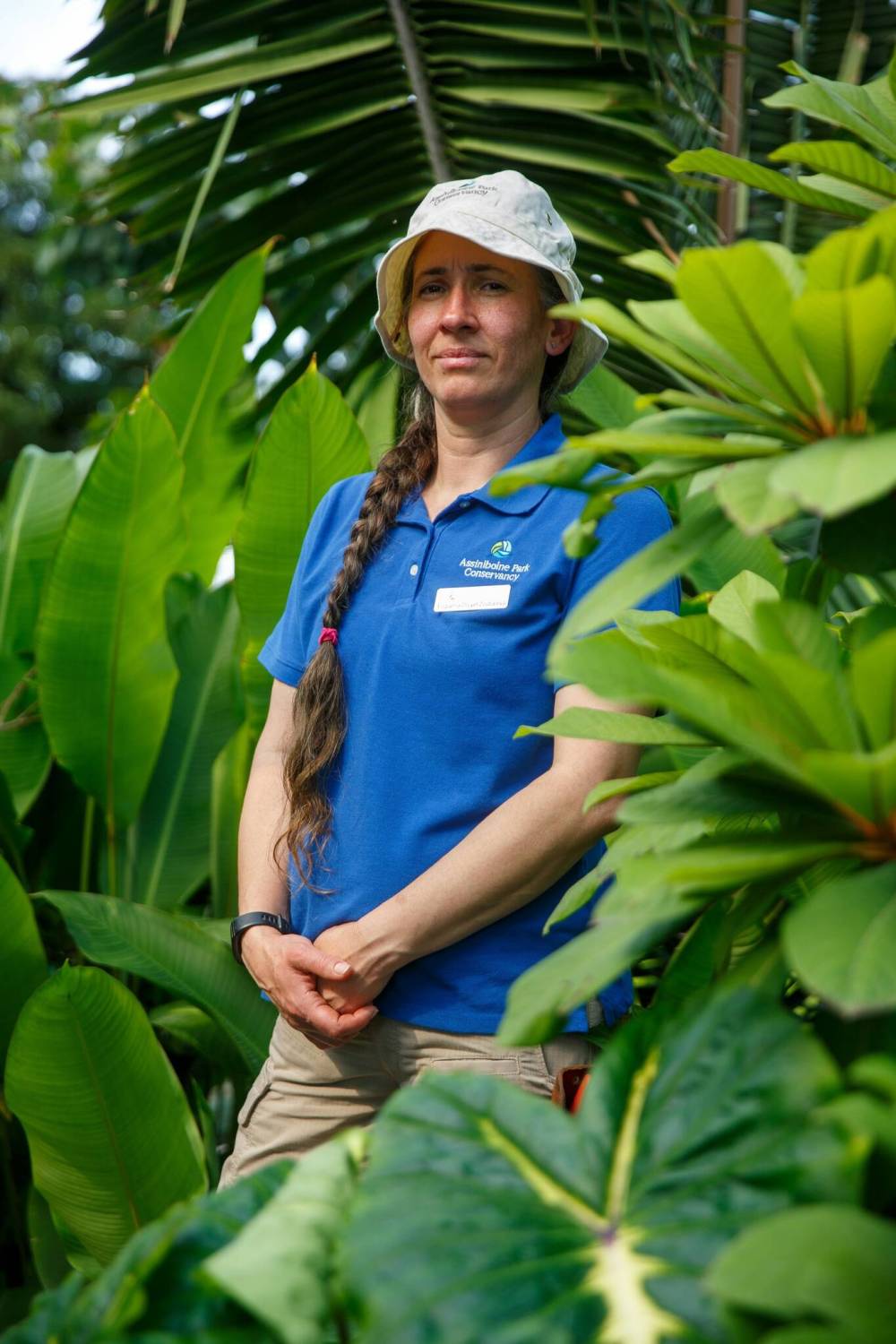
Even so, she considers herself privileged. Her mother was a Russian Jew, born in St. Petersburg (previously known as Leningrad), which gave her the freedom of travelling out of the country long before government-imposed travel restrictions were abolished in 2013.
She would visit her Jewish grandparents and her aunt, all of whom survived the Siege of Leningrad, and listen to their “heartbreaking” stories.
“I always had the curiosity from an identity point of view and from all that happened during the Holocaust. It was a hard topic for my grandparents, as they lost parents and siblings. They did survive because they lived in Leningrad that never was taken by Nazis. They and my aunt survived the Siege of Leningrad. My Aunt Nina is still alive — she is 89 years old — and she was a child during that time and the stories are heartbreaking. So, my Jewish identity always came from that part of the history,” she says.
“My mom, coming from the Soviet Union, didn’t know much about Jewish traditions. Then when I was in high school I went to the Jewish community to rediscover my roots and it was the most beautiful experience. I am not religious, but I have a deep sense of identity with the traditions and festivities.”
At the University of Havana, she studied biology, majoring in environmental science, and was with the environmental studies department at the Tropical Geography Institute in Cuba for five years.
She then went on to work at the Antonio Núñez Jiménez Foundation for Nature and Humanity, Environmental Education and Conservation of Biodiversity Program for six years before moving to Canada 10 years ago with her husband, Wilfredo de la Casas Rojas, and their daughter, Leila. Eight-year-old son, Ari, was born here.
She is devoted to her children — “I am a crazy-in-love mom for her kids; I can walk to the moon if I need to for them” — and decided to move to Canada to give her then-seven-year-old daughter a better future.
Druyet Zoubareva manages a team of six to tend more than 12,000 trees, shrubs and flowers representing 400 unique species in The Leaf.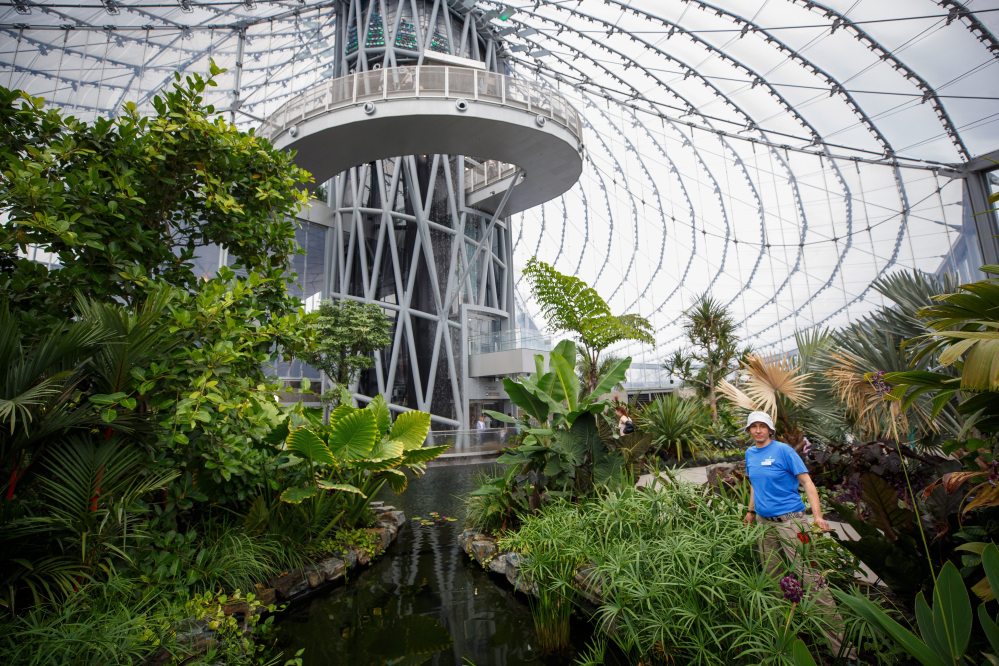
“We decided to come to Canada for a better future for our daughter. A developed country always is going to be better in terms of opportunities, freedom and self-development.”
Winnipeg is home now. She loves the city’s size, its proximity to nature, and Manitoba’s many lakes and friendly and diverse communities. Canada is “tailored” for her.
“I did feel like it was the place in the world for me with almost a déjà vu feeling,” she says. “I don’t miss Cuba that much, to be honest. I miss my friends and stuff but not the country and the situation, not that much. I went back twice since I came to Winnipeg. The last time, when my daughter was 12, we went there to do her bat mitzvah.
“Maybe some day we will go again… it is a little bit complicated to go to Cuba.”
For now her mind is strictly on the job at hand. Remarkably intelligent, she wears her learning lightly, explaining complex facts in clear, direct language. Ever the scientist, it is in her nature to view situations from various perspectives. She is loath to offer any negative response, even when it comes to the bane of every gardener: weeds.
“If you have your garden and you don’t want them, then they are a weed.” she says, “But if you have a place that has been heavily impacted.… maybe there was mining or something with really negative impact on the environment, that is really contaminated and nothing else grows, then those weeds are going to grow there, and are going to create the soil, and are going to absorb many of those toxins and contaminants, so everything is relative…”
And with that she’s off, a blink-and-you’ll-miss-it figure, long hair neatly woven into a braid swinging down her back as she darts around Bismarck palms, mangosteen trees and lobster claw plants, making sure everything is as it should be.
Woe betide anyone who dares take a clipping from here.
av.kitching@winnipegfreepress.com

AV Kitching is an arts and life writer at the Free Press. She has been a journalist for more than two decades and has worked across three continents writing about people, travel, food, and fashion. Read more about AV.
Every piece of reporting AV produces is reviewed by an editing team before it is posted online or published in print — part of the Free Press‘s tradition, since 1872, of producing reliable independent journalism. Read more about Free Press’s history and mandate, and learn how our newsroom operates.
Our newsroom depends on a growing audience of readers to power our journalism. If you are not a paid reader, please consider becoming a subscriber.
Our newsroom depends on its audience of readers to power our journalism. Thank you for your support.


